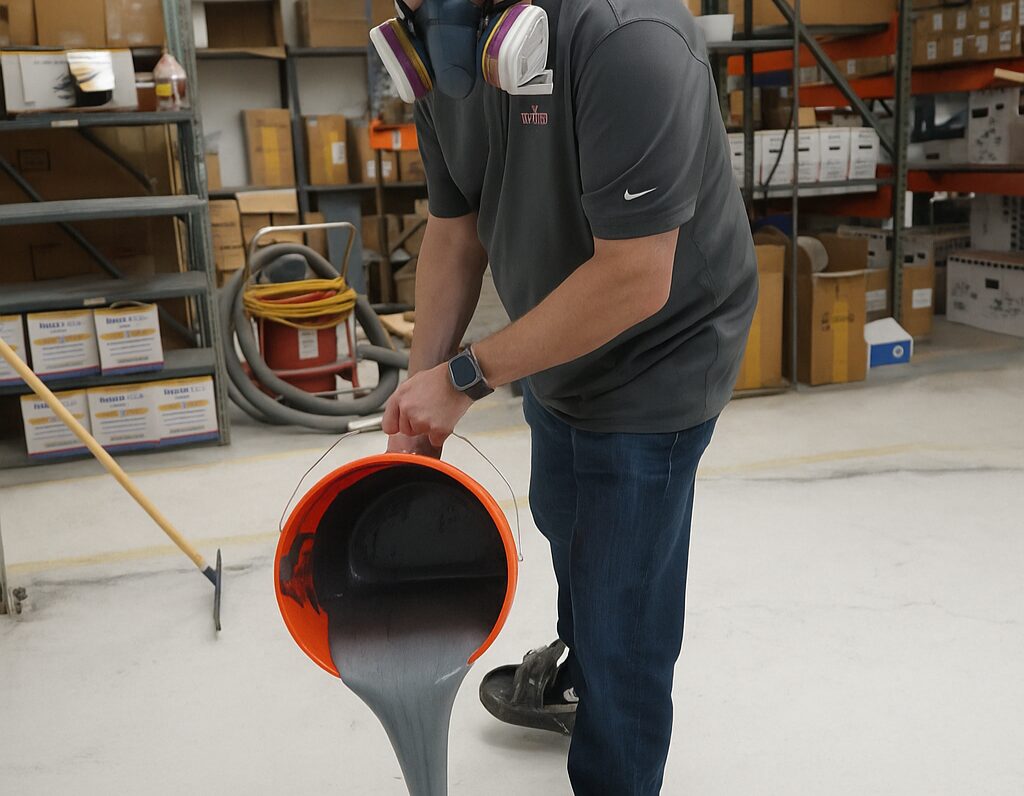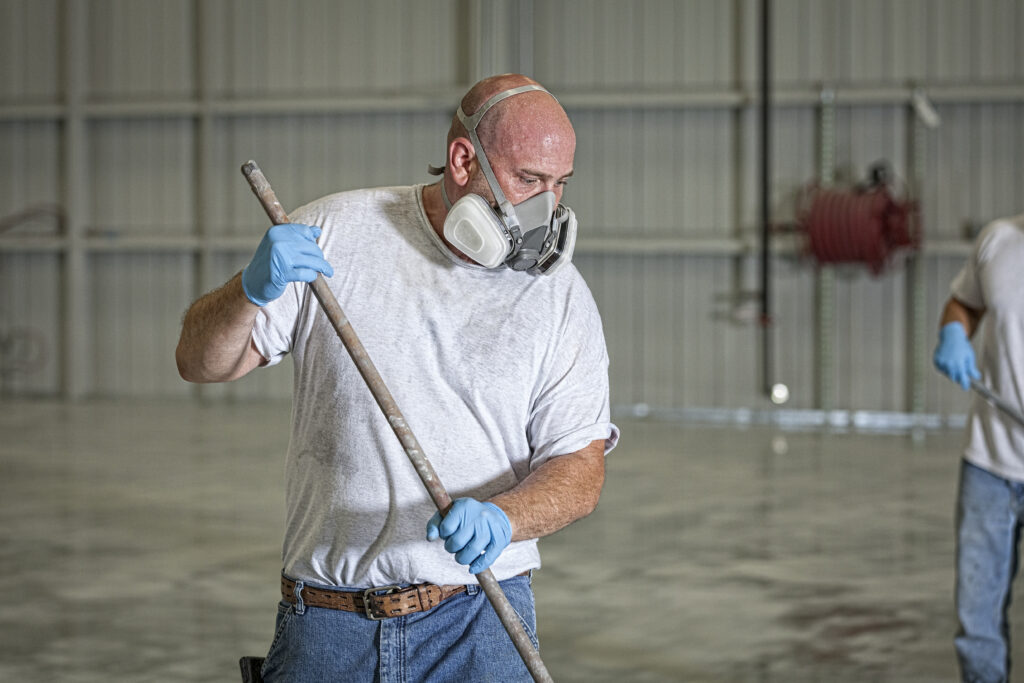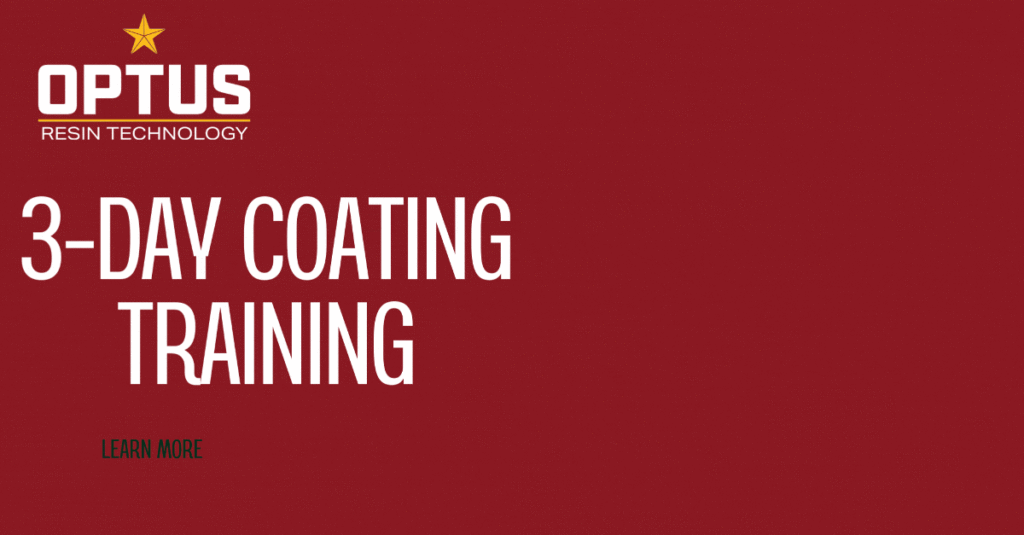Become an Installer

Working with epoxy resin for floor installation can be exciting, but safety should always come first. Many people wonder if they need to wear a mask while mixing and applying epoxy products. The simple answer is YES– respiratory protection is essential when working with epoxy resin systems.
Why Masks Matter with Epoxy Resin
Epoxy resin contains volatile organic compounds (VOCs) that become airborne during the curing process. These chemical vapors can cause serious health problems if inhaled over time. The fumes from epoxy flooring materials can irritate the respiratory system and lead to headaches, dizziness, and breathing difficulties.
Professional floor coating installers know that epoxy fumes pose real risks. The chemicals in two-part epoxy systems release harmful vapors that can affect anyone in the work area. Without proper protection, workers may experience both immediate and long-term health effects.
Types of Respiratory Protection for Epoxy Work
Not all masks provide the same level of protection against epoxy vapors. Paper dust masks or basic surgical masks won’t protect against chemical fumes. Workers need specialized respiratory equipment designed for organic vapors.
Half-face respirators with organic vapor cartridges offer good protection for most epoxy flooring projects. These masks filter out harmful chemicals while allowing normal breathing. Full-face respirators provide even better protection by covering the eyes as well as the respiratory system.
For large commercial flooring jobs or poorly ventilated spaces, supplied-air systems may be necessary. These systems provide clean air from an external source, offering the highest level of respiratory protection available.

Health Risks of Epoxy Exposure
Short-term exposure to epoxy fumes can cause immediate symptoms like throat irritation, coughing, and eye watering. Many people also experience headaches and nausea when working around uncured epoxy without protection.
Long-term health effects are more serious. Repeated exposure to epoxy chemicals can lead to sensitization, where the body becomes allergic to the materials. This condition can cause severe reactions even with minimal future exposure. Some workers develop occupational asthma that makes breathing difficult.
The skin can also absorb epoxy chemicals, adding to the total body burden. This is why complete personal protective equipment (PPE) is important for safe floor installation work.
Proper Ventilation and Air Quality
Good ventilation works together with respiratory protection to keep workers safe. Adequate airflow helps remove chemical vapors from the work area before they can build up to dangerous levels. Cross-ventilation with fans and open doors creates air movement that carries fumes away.
For indoor epoxy flooring projects, mechanical ventilation may be needed. Exhaust fans pull contaminated air out while fresh air enters from other areas. This constant air exchange reduces vapor concentrations and makes masks more effective.
Air quality monitoring can help determine if ventilation is working properly. Professional installers often use vapor detection equipment to measure chemical levels in the work environment.
Selecting the Right Mask for Epoxy Projects
Choosing appropriate respiratory protection depends on the specific epoxy products being used and the work environment. Check the safety data sheet (SDS) for each product to understand the chemical hazards and recommended protection levels.
Organic vapor cartridges are the standard choice for most epoxy resin work. These cartridges contain activated carbon that absorbs chemical vapors before they reach the lungs. Replace cartridges regularly according to manufacturer guidelines or when breakthrough occurs.
Make sure the mask fits properly with no air leaks around the face seal. Facial hair can prevent a good seal, reducing the mask’s effectiveness. Consider this when planning epoxy flooring projects.
Safety Standards and Regulations
The Occupational Safety and Health Administration (OSHA) sets workplace safety standards for chemical exposure. These regulations apply to professional flooring contractors and anyone working with epoxy products in commercial settings.
OSHA requires employers to provide appropriate respiratory protection when engineering controls aren’t sufficient. This includes proper mask selection, fit testing, and worker training on correct usage.
Even for DIY projects, following professional safety standards makes sense. The same health risks exist regardless of whether the work is commercial or personal.

Training and Best Practices
Proper training helps workers understand when and how to use respiratory protection effectively. Learning to recognize the signs of chemical exposure can prevent serious health problems before they develop.
Professional development programs teach safe handling techniques for epoxy materials. These courses cover PPE selection, ventilation requirements, and emergency procedures for chemical exposure incidents.
Experienced installers know that safety equipment is just as important as quality tools. Investing in proper respiratory protection pays off through better health and longer careers in the flooring industry.
Key Takeaways
- Always wear a mask with organic vapor cartridges when working with epoxy resin
- Paper masks and surgical masks don’t protect against chemical vapors
- Proper ventilation reduces vapor concentrations but doesn’t replace respiratory protection
- Half-face or full-face respirators provide adequate protection for most projects
- Check product safety data sheets for specific protection requirements
- Replace cartridges regularly to maintain effectiveness
- Professional training helps ensure proper safety practices
Frequently Asked Questions
Use a half-face or full-face respirator with organic vapor cartridges. Regular dust masks won’t protect against chemical vapors.
Take breaks every 30-60 minutes in fresh air, even with proper respiratory protection. This helps prevent fatigue and ensures your safety equipment is working correctly.
No. Proper ventilation is required along with respiratory protection. Masks work better when vapor concentrations are kept low through good airflow.
Yes. Even small amounts of epoxy release harmful vapors. The size of the project doesn’t change the need for respiratory protection.
Replace cartridges when you smell chemical odors, experience breathing difficulty, or according to the manufacturer’s time limits – whichever comes first.
Pregnant workers should avoid epoxy exposure entirely. Consult with a healthcare provider about workplace chemical hazards during pregnancy.
Learn Professional Epoxy Installation Techniques
Ready to master safe epoxy floor installation? Optus Resin offers comprehensive training programs that cover both technical skills and safety practices. Their hands-on courses teach proper respiratory protection, ventilation setup, and professional application techniques. Visit Optus Resin’s Training program to learn from experienced professionals who prioritize safety and quality results.


